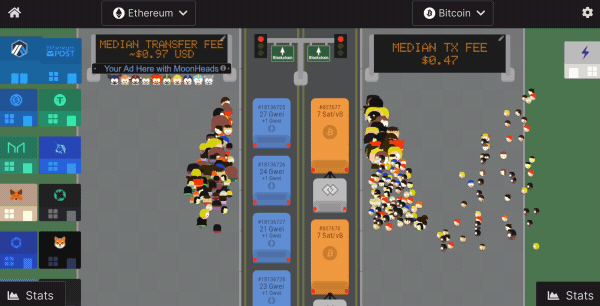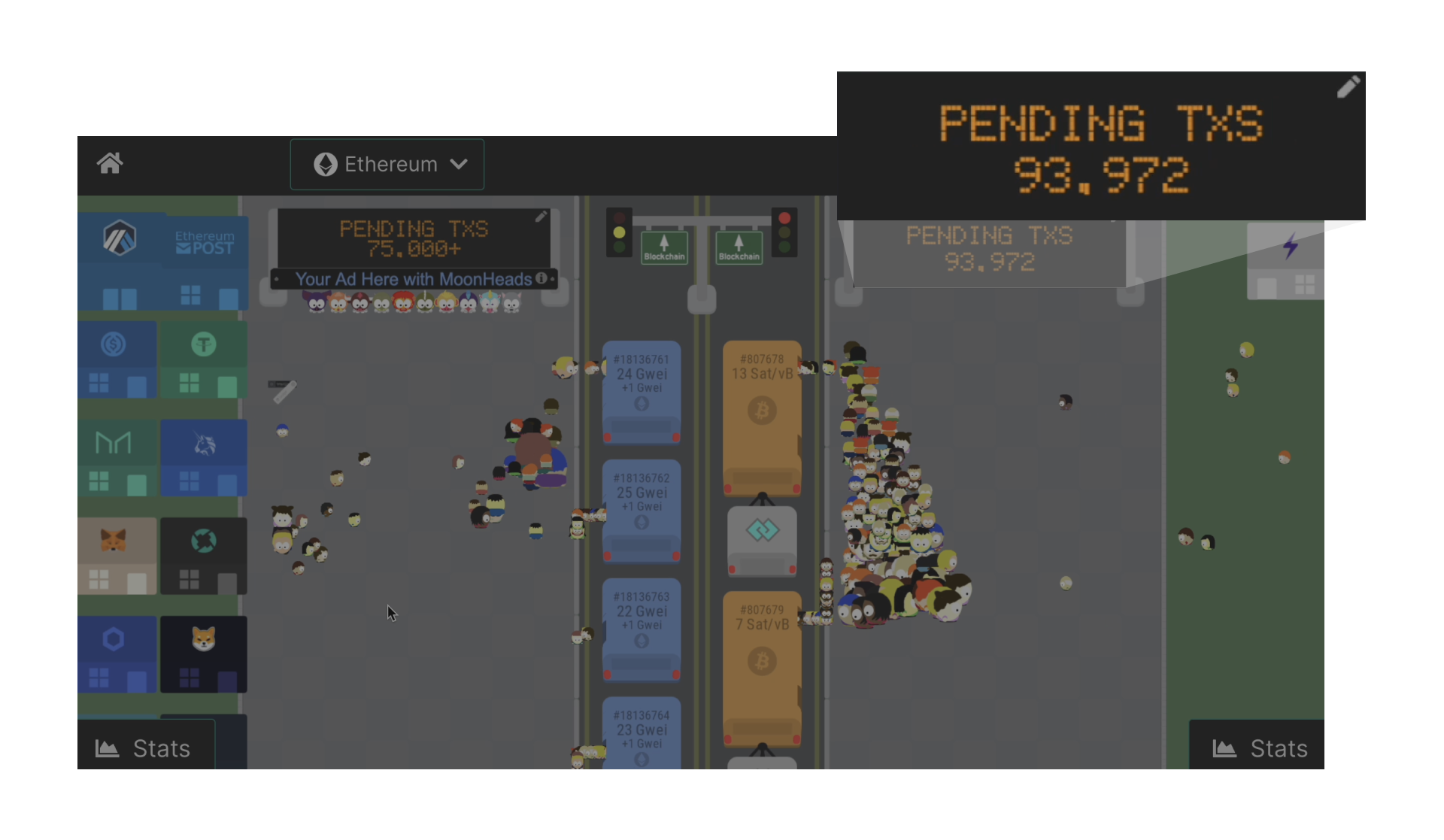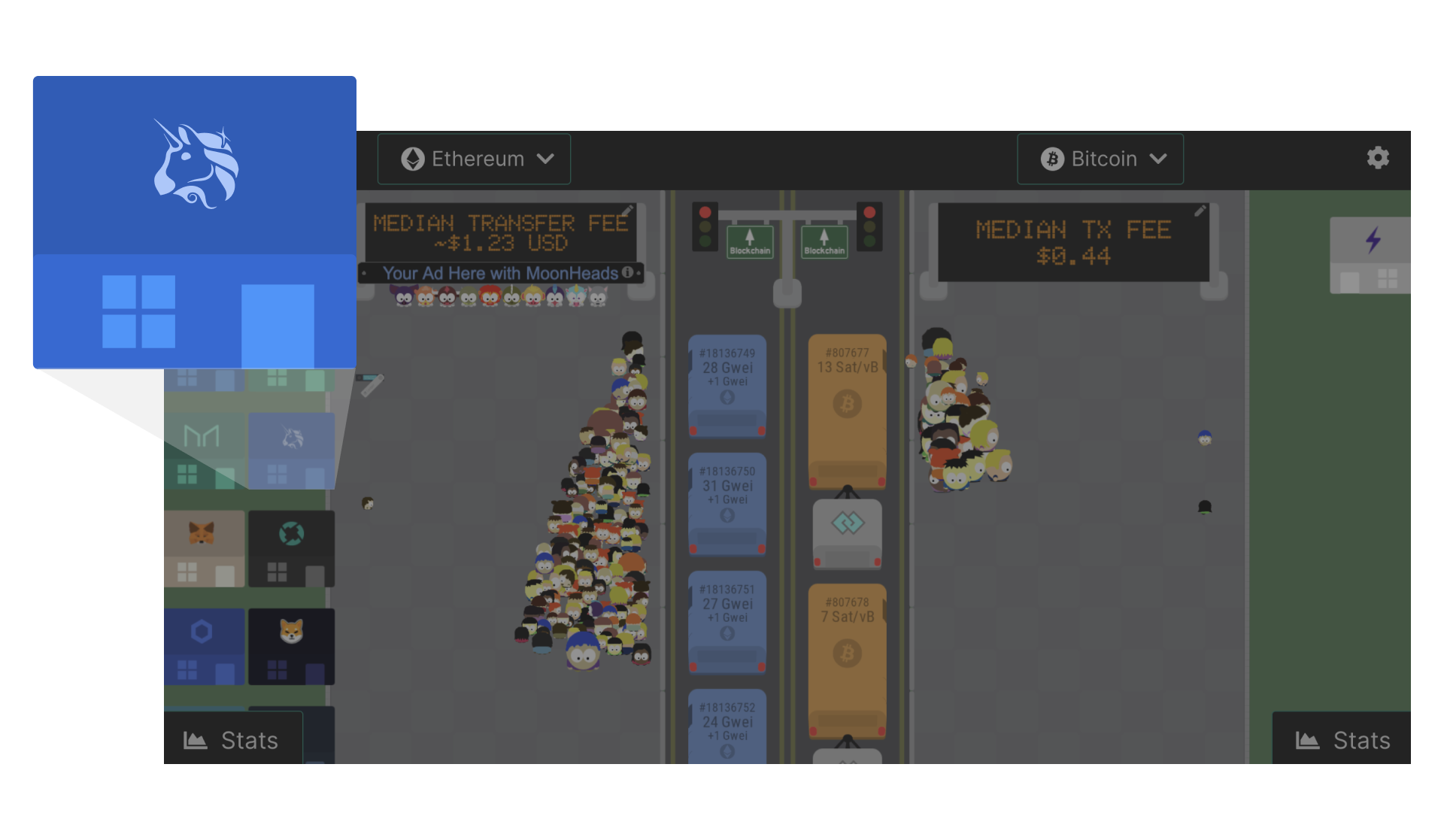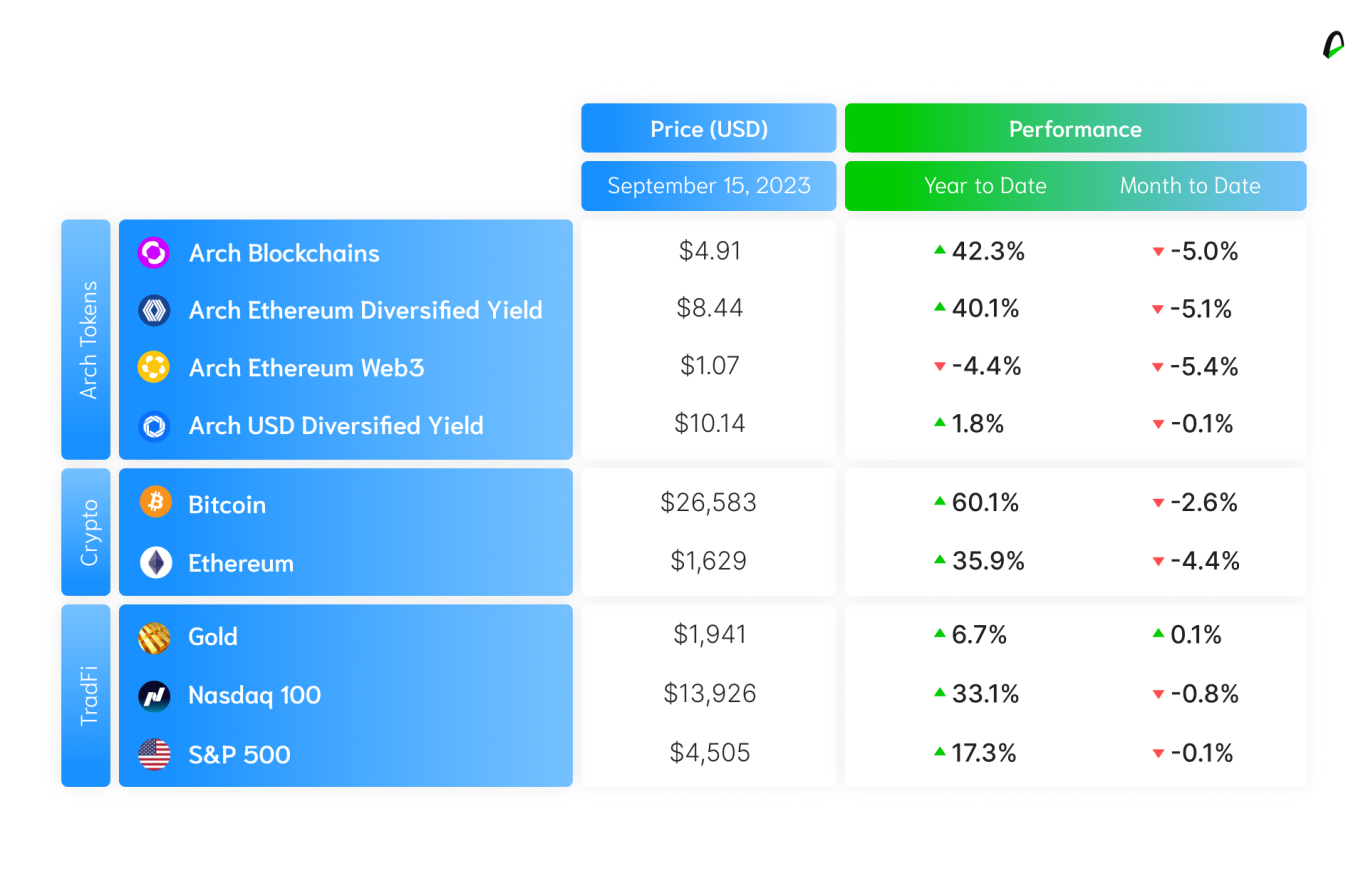Gm fellow Architects;
Ah, September, the month that crypto enthusiasts affectionately call "SeptemBear." Why, you ask? Well, history tells us it's been a bit of a downer for the crypto markets. But is that true?
Well, we're here to dive into the market movements and demystify blockchain transactions.
• Blockchain and subways have a lot in common.
• Historically, September can be a good moment to get into the crypto market if you have a longterm view.
• Crypto is coming to your closest financial institution.
This is how blockchain transactions work
Understanding how a blockchain works can seem abstract. There's a node, the transaction gets approved by validators, and there are fees. But where are all those things?
And most importantly? How does a blockchain make any money? (and if you are thinking about investing, that revenue part is probably essential)
Well, the answer is pretty much like the subway.

Uh? What crypto has to do with the subway?
Stay with me. Picture a subway station with two platforms - Bitcoin on the right and Ethereum on the left (you don't even have to imagine it; it's the image you have above).
On each platform, there's a line of empty subway cars, and folks are merrily boarding them. These subway cars have a schedule, departing at set intervals (15 seconds for Ethereum and 10 minutes for Bitcoin).
You've probably guessed it by now – each empty car symbolizes a block, and each person represents a transaction finding its seat inside the block (akin to passengers boarding the train).
As the subway departs, they take all the passengers patiently waiting at the platform. In blockchain lingo, those transactions are forever etched into the blockchain.
I see, but why do some passengers get into the cars while others stay on the platform forever?
These fast commuters are willing to pay higher fees, ensuring they snag a seat in the first block, getting recorded at lightning speed.
Think of them as VIPs, paying extra for a "fast track" to board the subway ahead of the pack. You'll also spot some big, burly passengers, representing transactions with more oomph, size, or value.

And that traffic sign means...?
It tells you how many passengers (transactions) eagerly await to board. These travelers wait rather than pay the current ticket price (transaction fees), hoping for a bargain when fees dip.

Cool, what else can I learn about this?
Use cases. On the Bitcoin side, you'll notice people seemingly popping out of thin air (like magic grass).
That's because Bitcoin (the protocol) mainly facilitates bitcoin (the cryptocurrency) exchanges between individuals.
These users decide on a whim to trade bitcoin, and their transactions are submitted to the network, which then records them on the blockchain. Bitcoin's value proposition is straightforward: it's a digital currency for sending and receiving without fancy extras.
Now, switch over to Ethereum, and it's like entering a bustling city with towering buildings, each adorned with symbols. These buildings are protocols (think of them as companies).
I see, so a protocol is like a company
Exactly. For the sake of this example, and in real life, a protocol works in a similar fashion than a company providing a service.
When a person leaves a building and hops on a subway car, that's a transaction using the protocol, soon to be etched in the blockchain.
One of the standout buildings on the Ethereum side belongs to Uniswap – the big kahuna of decentralized exchanges in the Ethereum universe. If you focus on it, you'll see that Uniswap is a hotbed of activity, one of the most frequently used protocols.

And that's how they make money?
Ding, ding, ding. The representation of protocols as buildings isn't just for show – they generate revenue every time they're used. Every transaction or person leaving a building has a fee tied to using the protocol.
Take Uniswap, for instance – users chip in a small fee for each trade, an income source for UNI holders (similar to stockholders in a company).
And how much money has Uniswap made?
In 2022, Uniswap raked in over $800 million in fees from its users.
Any more like that?
Yes, there's a bustling metropolis of projects on the Ethereum network. As seen through the transactions, their vibrant activity brings in protocol fees, boosting projects and providing fees for the Ethereum network itself, the underlying foundation for these projects.

Where can I check this subway/crypto collab?
On TXTStreet. You'll get real time information about all transactions.
How can I invest in all of these?
That's what we are here for; if you want to invest in the subway (think in the technology that powers everything), you can invest in Arch Blockchains. This token diversifies your investment through the most critical blockchain networks.
If you want to invest in the companies that also ride the subway, Arch Ethereum Web3, invest in a wide array of these projects.
Don't sure where to start? A portfolio that combines the best of both worlds is probably where you should be.
Is this SeptemBear?
September has historically been a challenging month for crypto performance. Bitcoin has experienced a decline in September every year since 2017. The exact reasons behind this trend remain unknown.

Still, it's widely believed to be influenced by various factors, including tax deadlines, seasonal patterns, and investors' behavior after their summer vacations in the northern hemisphere.
So far, 2023 hasn't been different, with Bitcoin and Ethereum showing a decline of -2.6% and -4.4% in the month. Meanwhile, traditional risky indices are marginally receding (-0.1% S&P 500 and -0.8% Nasdaq).
Amidst this challenging climate, there's a silver lining for those with a long-term perspective. Let's not forget that in September 2017, Bitcoin was trading at approximately $4,600 and Ethereum at around $300. Right now? They are trading at $26,270 for Bitcoin and $1,600 for Ethereum—quite the increase.
Despite the September effect, Arch Blockchains ($CHAIN), our product encompassing major existing blockchain protocols, has demonstrated an impressive year-to-date performance of 42.3%, highlighting the value of adopting a long-term investment strategy in crypto.
📰 Crypto is coming to your favorite financial institution soon
In the last newsletter edition, we talked about how MercadoPago will allow users to buy or sell USDC and how the Siwft system that's the core of all international transfers is testing blockchain technology.
⏱ If you only have time for the quick and dirty
- PayPal está implementando un "off-ramp" para permitir a los usuarios convertir sus crypto en dinero fiat.
- Franklin Templeton, el gestor de activos que gestiona 1,4 billones de dólares en activos, acaba de registrarse para un ETF de Bitcoin
- Binance US está, nuevamente, en problemas
☕️ If you want the full scoop
🪙 On PayPal: PayPal is rolling out fresh on-ramps and off-ramps for Web3 payments, exclusively for US customers. What's the buzz? This service allows crypto users to transform their digital assets into USD straight from their wallets into their PayPal. MetaMask, one of the top crypto wallets, is also connected.
💸 Another day, another ETF filing: As you can see, asset managers left, right, and center are all applying for a Bitcoin ETF. The latest one is Franklin Templeton. Multiple spot Bitcoin ETF applications are now being reviewed by the SEC, including one from BlackRock, the world's largest asset manager.
You can read more abut what a Bitcoin ETF means to markets here.
🚨 On Binance being on trouble, again: 2023 hasn't exactly been a walk in the park for Binance. US. It's been more of a rocky rollercoaster ride. First, they had a not-so-friendly visit from the SEC, complete with a lawsuit and a restraining order that froze their assets. They also broke up with their bank partners and Paxos, their stablecoin partner.
And now, Brian Scroder, the CEO, has decided to exit, along with a whopping 100 employees. The Chief Legal Officer, Norman Reed, is becoming the interim CEO. And the exchange claims they've got "more than seven years of financial runway" to keep the lights on. But one thing is clear, decentralization continues to be the key concept when investing in crypto.
🗞 In other news - Powered by The Defiant
- Visa Taps Solana For Merchant Settlements In USDC
- Sony Unveils Plans To Develop Blockchain
- MetaMask ‘Sell’ Feature Enables Ethereum Users To Cash Out
📺 Look mom, we’re on the news!
Talking about the halving and the impact of not investing in crypto

And sharing more about the Web3 ecosystem

Disclaimer: The opinions expressed are for general informational purposes only and are not intended to provide specific advice or recommendations. The views reflected in the commentary are subject to change without notice



